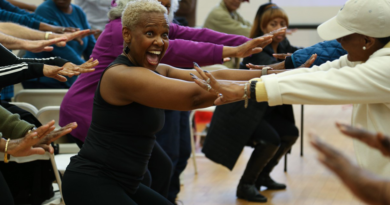Getting to Higher Ground
By Chris T. Pernell, MD, MPH, FACPM, is Chief Strategic Integration and Health Equity Officer at University Hospital, Newark, NJ.
We will forever define 2020 as the year a novel coronavirus set fire to the globe. Nearly two years later, COVID-19 is still raging—though in recent weeks the national case average plateaued somewhat—there is a mixed picture emerging across different regions of the country. As of mid-November, average new coronavirus cases are hovering around 80,000, about 46,000 Americans are hospitalized, and approximately 59% of the population is fully vaccinated. In New Jersey, we have seen similar trends. New cases are still above 1,000 but down from nearly 3,000 in early September. Current hospitalizations in our state have dipped below 800 and more than 5.9 million New Jersians are fully vaccinated.

While these are welcomed milestones, we cannot afford to celebrate prematurely but rather, we must persist and even advance at a quicker pace. The Delta variant remains poised to destroy life and wreak havoc and recent trends can be reversed during the fall and winter months as more of us retreat indoors and family holidays approach. Over the past two weeks, 21 states have seen a 10% plus surge in daily cases, including New York and Pennsylvania. Bottom-line, how long we stay ahead of the virus and whether or when we’re knocked off course again depends on how well we stick to a multi-layered mitigation strategy and our fundamental understanding of being in this fight together.
Our children need us the most right now. With the FDA and CDC’s early November decision to authorize the Pfizer vaccine for the 5–11 age group, 28 million children are now eligible for the vaccine. For 14 consecutive weeks, the number of cases of children with COVID-19 has been above 100,000. Any child who gets vaccinated will need a vaccine confident adult to execute on that action. Yet 30% of US adults remain unvaccinated. Polling data from the Kaiser Family Foundation (KFF) suggests that the gap among Black, Latinx, and white vaccination rates may be narrowing with at least 70% in all three groups reporting having received at least one dose in the October report. This happened because of a focus on equity and acknowledging how racism operates to infect every facet of American life. While many understand the more than 750,000 American lives lost are unprecedented, it’s clear more must be done to remove access barriers and to encourage those who lack vaccine confidence and question the integrity of the science and public institutions in general. A hidden toll of COVID-19 is the fact that more than 140,000 children lost a primary or secondary caregiver and Indigenous, Black, and brown children were among the worst impacted.
Pandemics are not novel, but what determines how any society fares is its level of preparedness, baseline fissures, and inequities that marginalize certain groups and how well communities are equipped to endure, fight back, and overcome. While the American story of this crisis is still being written, there are salient lessons and interim wins that should be amplified and built upon to achieve enduring success. We dare not risk the alternative.
Our greatest power doesn’t rest in individuals, but in the whole. It’s collective power. Community power. People power. And, exercising this power requires all of us to do what benefits the masses, keeps all of us safe, and allows us to get to higher ground. This battle is uphill because it is not only about taming a pandemic, but it’s also about digging up the deepest roots that threaten our collective well-being and change. The time to act is now.


